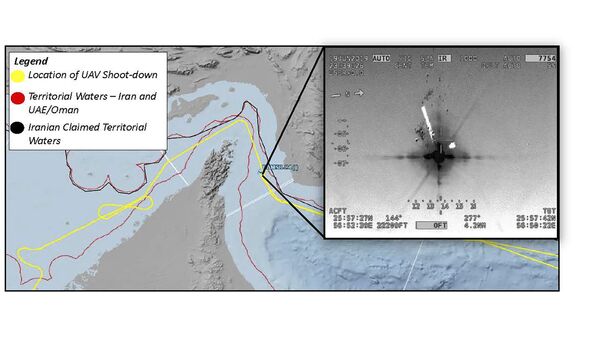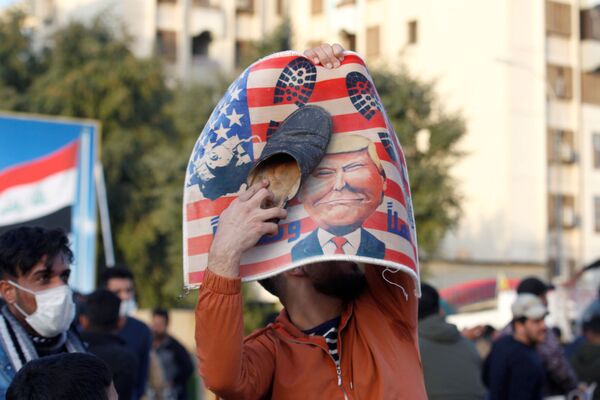“Either it’s resolved diplomatically through negotiations or it’s resolved through force, through war,” Barack Obama said in 2015, defending his hard-fought nuclear deal with Iran.
“The United States will quickly and fully strike back, and perhaps in a disproportionate manner” if Iran attacks, his successor Donald Trump threatened on Sunday, hours before that deal officially ceased to be.
How did it come to this?
The answer is complex, but it all makes sense now if we look at what has been happening for the past 19 months, since Donald Trump tore up the agreement.
Here’s a timeline of all key events that have happened between the US and Iran since then.
8 May 2018
President Trump announces withdrawal from the 2015 nuclear agreement with Iran, aka the Joint Comprehensive Plan of Action. Trump’s speech comes a week after Israel’s Prime Minister Netanyahu, his key ally, published what he called intelligence documents showing that Iran had been concealing and expanding its nuclear programme despite the deal it signed with world powers.
Some analysts suggest that the documents were old and no longer relevant, and the International Atomic Energy Agency, which is monitoring Iran’s compliance with the deal, says it has “no credible” evidence that Iran was working on nuclear weapons after 2009.
Trump, however, claims that Iran had been cheating the international community and blames the “horrible, one-sided” deal for failing to prevent Iran from supporting “terrorist proxies and militias” in the Middle East and developing ballistic missiles.
9 May 2018
Iran’s supreme leader, Ayatollah Ali Khamenei, lambasts Trump and says his statement was “ludicrous and shallow”. He adds that it isn’t feasible for Iran to continue abiding by the agreement without making sure that its European signatories – Britain, France and Germany – could handle US pressure. They promise to maintain the pact.
22 May 2018
Secretary of State Mike Pompeo lists 12 tough demands for Iran to be covered by a new nuclear treaty that the US hopes to negotiate instead of the JCPOA. Those ultimatums include an end of proliferation of ballistic missiles and nuclear-capable missile systems, as well as halt of support for regional militant groups.
6 August 2018
After Iran rejects those demands, Trump introduces the first round of economic sanctions against Iran, originally lifted under the 2015 nuclear deal. They target its automotive sector, sovereign debt, purchase of US dollars, and supply or trade of metals such as gold, aluminium and steel.
5 November 2018
The United States re-imposes sanctions on Iran’s vital economy sectors such as energy, ship-building, shipping, and banking. Most importantly, they ban the sale and transport of oil and petrochemical products – Iran’s primary source of foreign currency. Both sets of sanctions also apply to non-US companies and individuals.
8 April 2019
The US labels the Islamic Revolutionary Guard Corps (IRGC), the elite arm of the Iranian military, as a foreign terrorist organisation – the first time the US formally designates another country’s military a terrorist group. Iran in response blacklists the US Central Command and designates the US government a “state sponsor of terrorism”.
22 April 2019
The Trump administration removes oil sanctions waivers previously granted to some of Iran’s biggest customers, seeking to drive its oil exports to zero.
5 May 2019
Trump’s national security adviser John Bolton, the main architect behind the “maximum pressure” Iran policy, announces the deployment of an aircraft carrier strike group and a fleet of Air Force bombers to the Middle East in response to unspecified threats to US troops from Iran.

8 May 2019
On the anniversary of US withdrawal from the JCPOA, Iran announces that it will halt parts of its nuclear commitments by stepping up its production of enriched uranium, used to fuel nuclear power plants, and heavy water, used as a coolant in nuclear reactors.
Iran also gives the other signatories 60 days to protect it from the US sanctions; otherwise, it would exceed the 3.67-percent uranium enrichment beyond set in the nuclear deal, moving closer to getting a nuclear bomb.
On the same day, the US announces new sanctions against Iran’s steel and mining industries.
May-July 2019
Attacks are carried out against several tankers in the Persian Gulf and Saudi oil facilities, which the US blames on Iran without evidence. British commandos seize a supertanker carrying Iranian oil off Gibraltar, with Iran intercepting a British-owned tanker two weeks later. Both ships are eventually released.
17 June 2019
The United States announces the deployment of 1,000 additional troops to the Middle East in response to the tanker incident.
20 June 2019
Iranian forces shoot down a US spy drone they said breached Iranian airspace. The Pentagon insisted that it was in international territory over the Strait of Hormuz. The incident led to Donald Trump ordering a retaliatory strike against Iran, which was cancelled at the last minute.

1 July 2019
Iran declares that it has exceeded its internationally-agreed 300-kilogram threshold for low-enriched uranium. Tehran also promises to begin enriching uranium beyond the 3.67 percent limit under the JCPOA.
5 November 2019
Iran’s nuclear authority says it started injecting gas into 1,044 centrifuges in the underground Fordow nuclear plant, which were previously spinning empty.
27 December 2019
A US civilian contractor is killed and several American and Iraqi troops injured in a rocket attack on an Iraqi base in Kirkuk. The militia group Kataeb Hezbollah, purportedly backed by Iran, is thought to have be behind the attack.
29 December 2019
The US bombs three sites in Iraq and two in Syria, killing twenty-five Kataib Hezbollah fighters.
31 December 2019
Two days of protests at the US Embassy in Baghdad against the American strikes.

2 January 2020
Iran’s most powerful military commander Qasem Soleimani and 11 others, including an Iraqi militia chief, are killed in a US drone strike in Baghdad. Iran vows to retaliate.
5 January 2020
The Iranian government holds massive funeral rallies for Soleimani, with similar marches going down in Iraq. Iraqi lawmakers pass a resolution requiring the government to force the withdrawal of American troops from the country.
On Sunday evening, Tehran said it would no longer comply with any of the limits laid down the nuclear deal.




